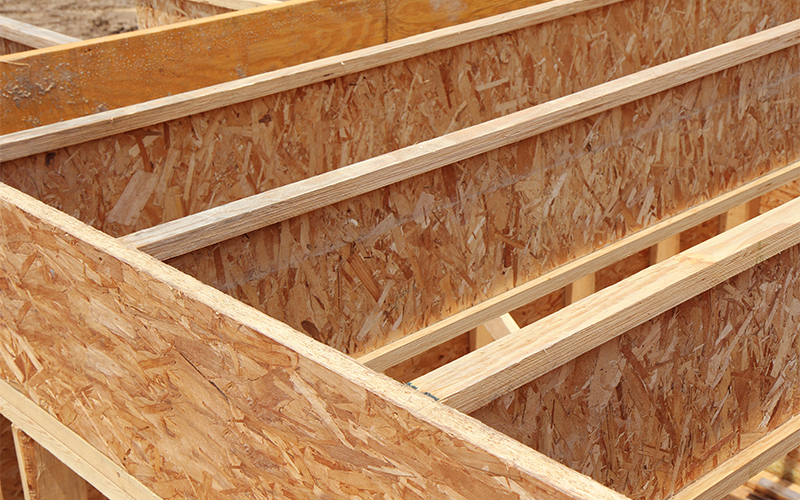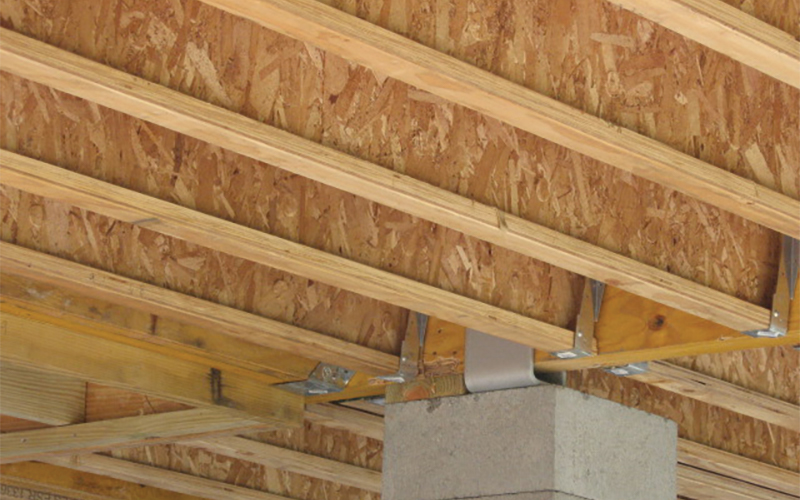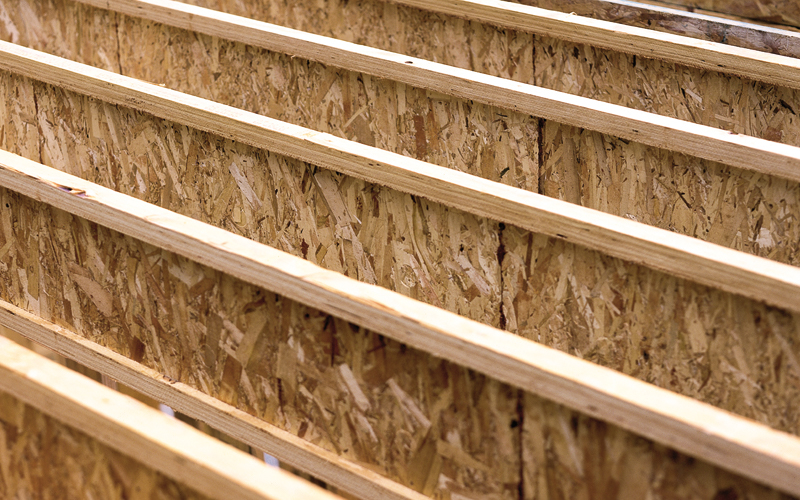I-joists are strong, lightweight, "I" shaped engineered wood structural members that meet demanding performance requirements. I-joists are comprised of top and bottom flanges that resist bending and are united with webs that provide shear resistance. The flange material is typically laminated veneer lumber (LVL) or sawn lumber, and the web is typically made with oriented strand board (OSB). This robust combination of structural materials results in a versatile, economical framing member that is easy to install in light commercial projects.
In the ever-evolving construction landscape, the choice of materials influences the success and efficiency of a project. Over the past 55 years, the I-joist, often associated with single-family construction, has proven its mettle and now reveals significant advantages in multifamily and commercial projects. Since I-joist are durable and come in longer spans, varying depths and a range of flange widths, builders and developers can enjoy versatility, adaptability and other advantages that elevate both functionality and cost-effectiveness.
Here are a few reasons to choose I-joists for multifamily projects:
Strong, Reliable and Lightweight
I-joists are typically significantly stronger than similarly sized dimension lumber joists. Almost half the weight of a plated truss, I-joists can often be handled by a single person. Since they are precision-engineered, they deliver consistent strength and performance. Structural integrity over time is a critical factor for any construction project, and I-joists address a common concern in large buildings—shrinkage. Designed to minimize shrinkage, I-joists deliver long-term structural stability.Ease of Installation
I-joist installation advantages are multifaceted, beginning with precision tailoring for a seamless fit in your project. I-joists are manufactured in a wide range of depths ranging from 9 ½ to 24 inches and can be special ordered in lengths as long as 60 feet, accommodating various designs. They are easy to trim in the field, allowing on-site adjustments or can be precision cut prior to shipping for a custom fit. This streamlines construction and helps minimize waste, making it ideal for larger projects. Unlike other materials, they don't have a prescribed top or bottom, easing installation and allowing builders to expedite the construction process.Fire-Rated Design Options
I-joists also offer design flexibility when it comes to fire-rated assemblies. Building codes require fire-resistant or fire-rated assemblies in certain locations, occupancies and types of buildings. There is numerous fire-rated floor-ceiling assemblies that incorporate I-joists and wood structural panels. These assemblies are listed in the manufacturers' code evaluation report and are recognized as fire-rated construction by building codes. Many of these design options are illustrated in the APA Design Guide: Fire-Rated Systems, Form W305.Cost Savings
I-joists bring versatility to multifamily and commercial construction, where mechanical, electrical and plumbing considerations are paramount. Their adaptability includes easy field modifications with hole guidelines or holes pre-cut before shipping. The eliminated need for additional support, such as strongback bracing or bridging, expedites construction and contributes to material cost savings. Additional savings are achieved through reduced installation times, reduced labor expenses, simplified design processes and fewer callbacks due to the consistently reliable performance.

- Seamless Integration
I-joists can be seamlessly integrated with other engineered wood products to deliver a reliable and robust system. Structural composite lumber (SCL), such as laminated veneer lumber (LVL) and laminated strand lumber (LSL), rim board, and glulam easily integrates with I-joists, offering dimensional stability and size compatibility, creating a construction combo that can reduce the need for furring in the field.

FRAMING CONSTRUCTION TIPS
The following floor framing tips are provided as general guidance. As proprietary products, I-joists should be installed following the installation instructions provided by the I-joist manufacturer.
- Except for cutting to length, I-joist flanges should never be cut, drilled or notched.
- Install I-joists so that top and bottom flanges are within ½ inch of true vertical alignment.
- Concentrated loads should only be applied to the top surface of the top flange. Concentrated loads should not be suspended from the bottom flange with the exception of light loads, such as ceiling fans, light fixtures or sprinkler pipe. Refer to APA’s Technical Note J745 for acceptable details.
- I-joists must be protected from weather prior to installation. Refer to APA’s Technical Note E705 for proper storage and handling.
- I-joists must not be used in applications where they will be permanently exposed to weather or will reach a moisture content of 16% or greater, such as in swimming pool or hot tub areas. They must not be installed where they will remain in direct contact with concrete or masonry.
- End bearing length must be at least 1 ¾ inches. For multiple span joists, intermediate bearing length must be at least 3 ½ inches.
- Ends of floor joists shall be restrained to prevent rollover. Use APA-rated rim board or I-joist blocking panels or appropriate hangers.
- I-joists installed beneath bearing walls perpendicular to the joists shall have full-depth blocking panels, APA-rated rim board, or squash blocks (cripple blocks) to transfer gravity loads from above the floor system to the support below.
- For I-joists installed directly beneath bearing walls parallel to the joists used as rim board or blocking panels, the maximum allowable vertical load using a single I-joist is 2,000 plf, and 4,000 plf if double I-joists are used.
Find additional information and guidance on I-joists in commercial construction in APA’s Resource Library.
Have questions about designing, specifying, installing or inspecting I-joists? Find and contact your local APA Engineered Wood Specialist here.







